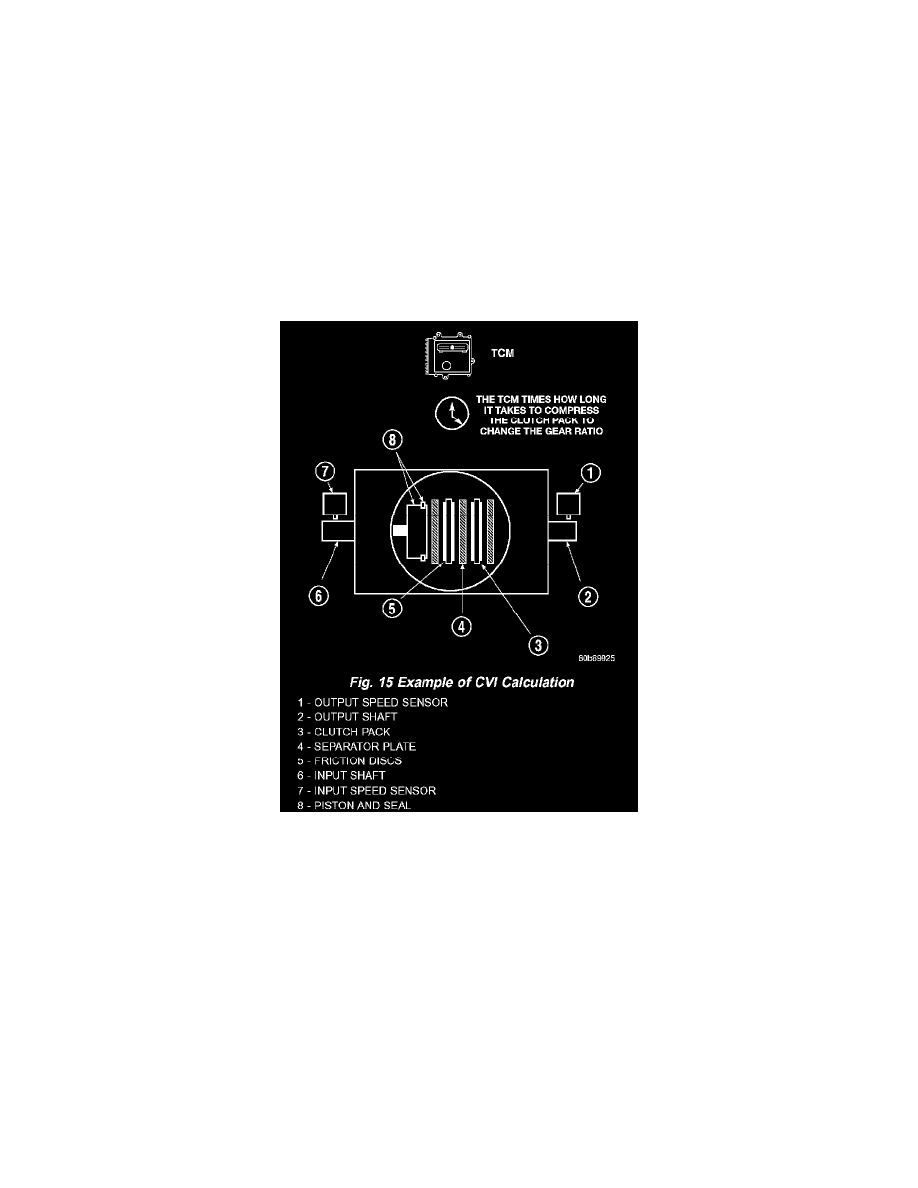Grand Caravan FWD V6-3.3L VIN 3 Flex Fuel (2002)

-
Vehicle Speed (to PCM)
-
Torque Reduction Request (to PCM)
An example of a TCM indirect output is:
-
Transmission Temperature (to PCM)
In addition to monitoring inputs and controlling outputs, the TCM has other important responsibilities and functions:
-
Storing and maintaining Clutch Volume Indices (CVI)
-
Storing and selecting appropriate Shift Schedules
-
System self-diagnostics
-
Diagnostic capabilities (with DRB scan tool)
Clutch Volume Index (CVI)
An important function of the TCM is to monitor Clutch Volume Index (CVI). CVIs represent the volume of fluid needed to compress a clutch pack.
The TCM monitors gear ratio changes by monitoring the Input and Output Speed Sensors. The Input, or Turbine Speed Sensor sends an electrical
signal to the TCM that represents input shaft rpm. The Output Speed Sensor provides the TCM with output shaft speed information.
Fig.15 Example Of CVI Calculation
By comparing the two inputs, the TCM can determine transaxle gear ratio. This is important to the CVI calculation because the TCM determines CVIs
by monitoring how long it takes for a gear change to occur (Fig. 15).
Gear ratios can be determined by using the DRB Scan Tool and reading the Input/Output Speed Sensor values in the "Monitors" display. Gear ratio
can be obtained by dividing the Input Speed Sensor value by the Output Speed Sensor value.
For example, if the input shaft is rotating at 1000 rpm and the output shaft is rotating at 500 rpm, then the TCM can determine that the gear ratio is
2:1. In direct drive (3rd gear), the gear ratio changes to 1:1. The gear ratio changes as clutches are applied and released. By monitoring the length of
time it takes for the gear ratio to change following a shift request, the TCM can determine the volume of fluid used to apply or release a friction
element.
The volume of transmission fluid needed to apply the friction elements are continuously updated for adaptive controls. As friction material wears, the
volume of fluid need to apply the element increases.
